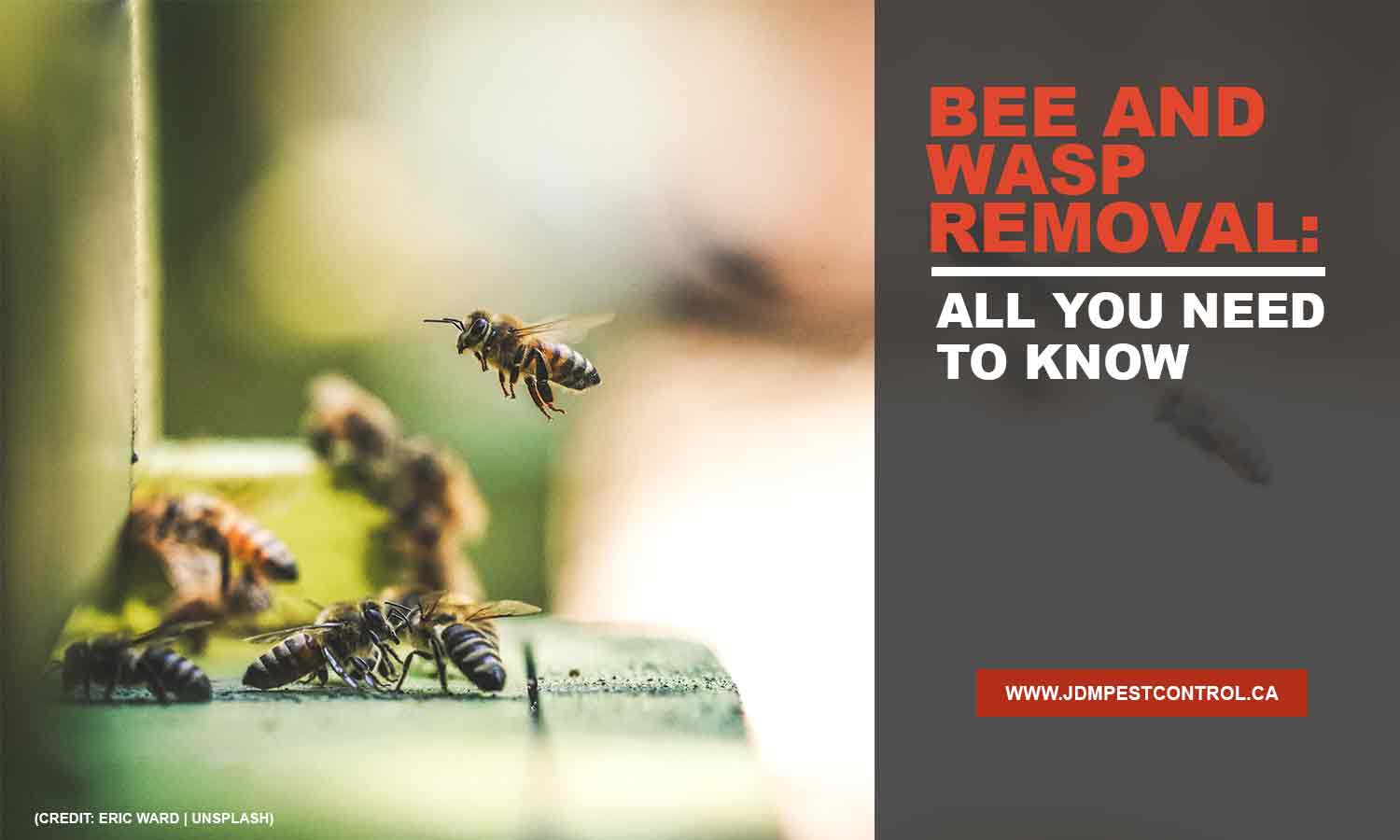Bees and wasps don’t only cause inconvenience; in some cases, they inflict a painful sting that can put your health at risk. You need to be extra careful when you spot a bees or wasps’ nest in or around your property.
When these unwelcome visitors invade your home or business, they don’t only pose a threat to your health but also cause damage to your property.
How Bees and Wasps Build a Shelter in Your Property
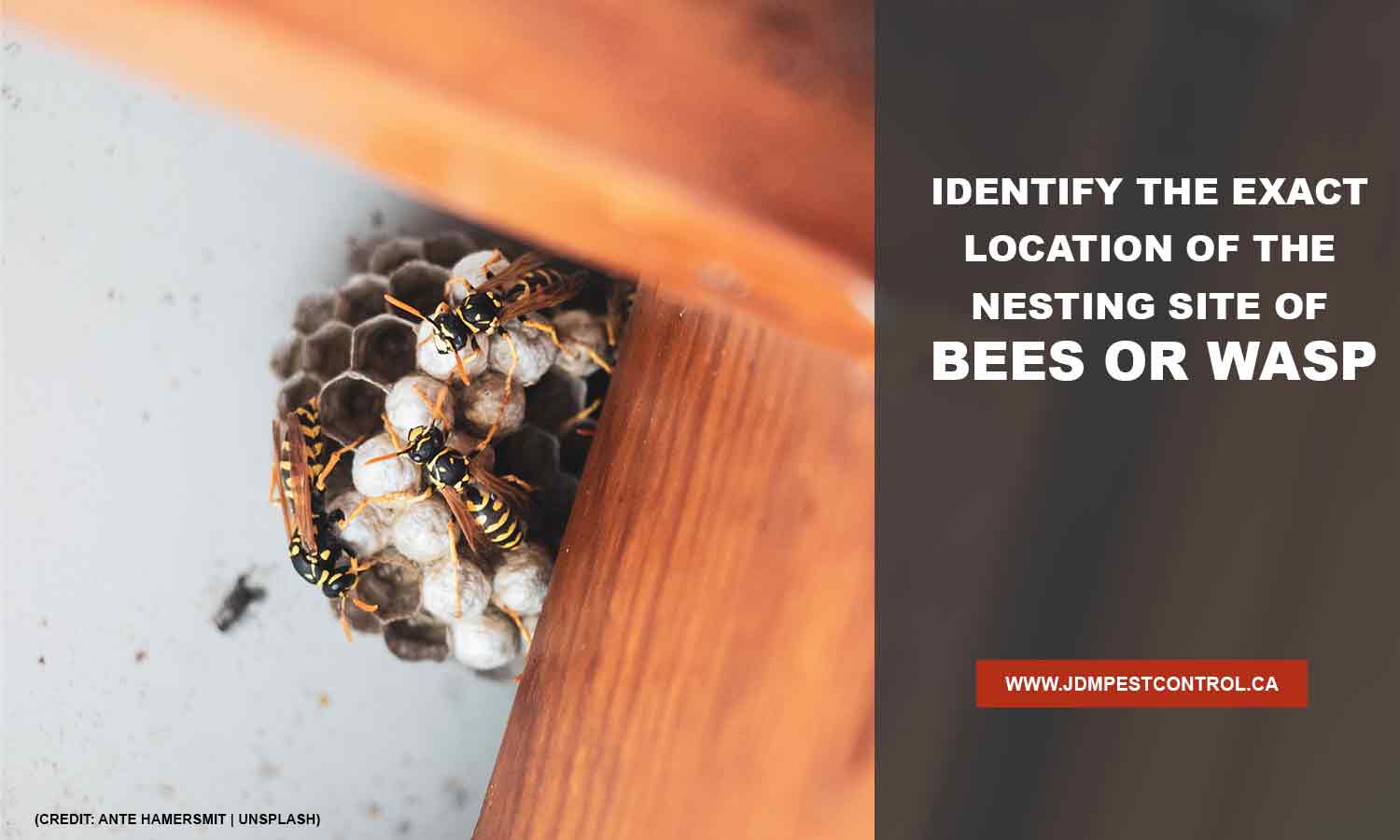
Bees and wasps commonly create nests or hives in wall cavities, roof voids, or outbuildings. A beehive contains honey which can potentially cause great damage to your home. On the other hand, a wasp nest built in a cavity can eat away at the plaster.
Stinging pests can attack in swarms when threatened. In case you detect bubbling in your ceiling or wall, never poke at it. Do not attempt to get rid of a bee or wasp nest on your own — even if you have wasp and bee repellent ideas. This tricky job requires professional tools and skills. Contact a pest control expert in your area before making any move.
Bees vs. Wasps: What’s the Difference?
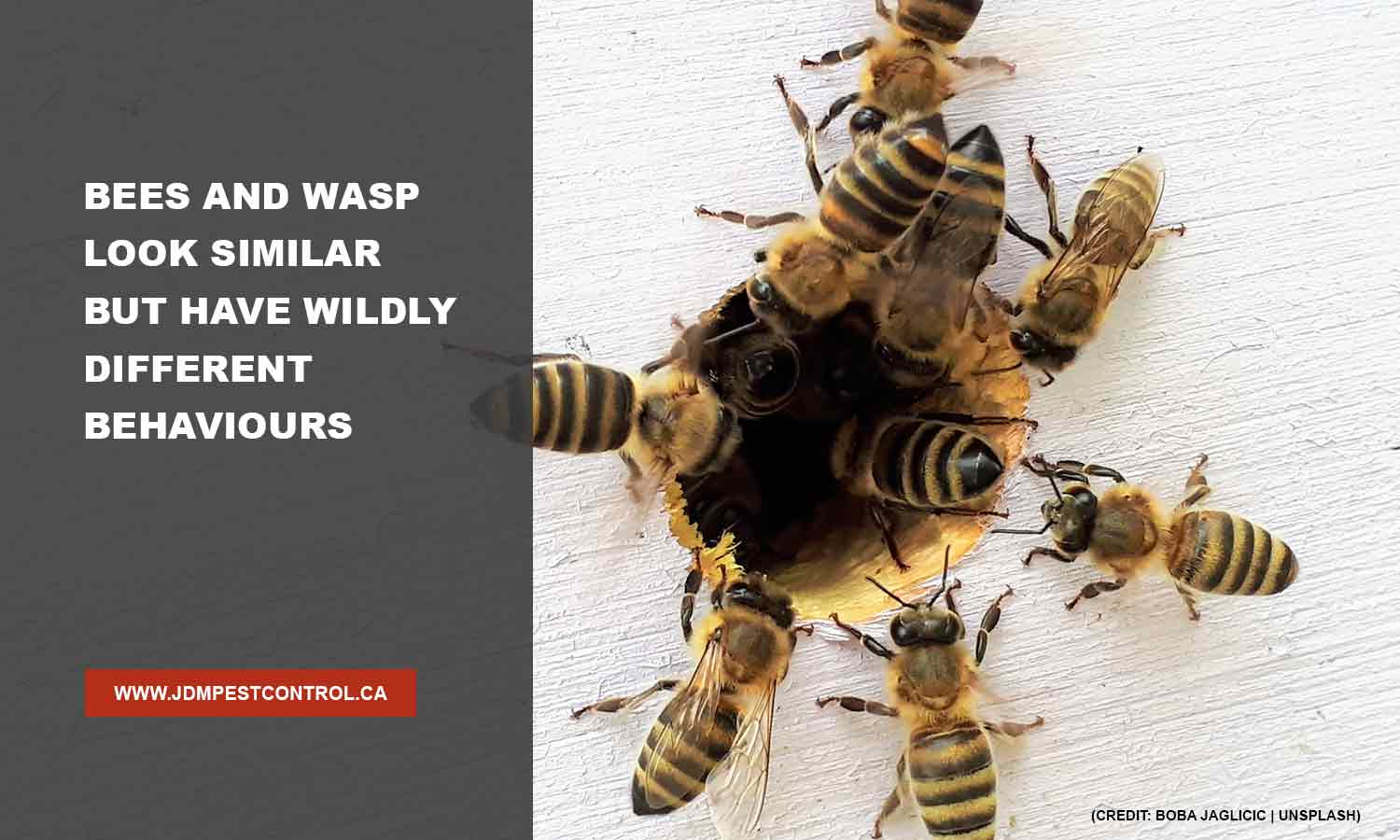
People often confuse wasps and bees, specifically honey bees and yellow jacket wasps. Although both stinging insects look identical, they vary in behaviour and food preferences.
Here’s how bees and wasps differ in terms of appearance, eating patterns, and life cycle:
Bees
- They are hairy and fuzzy.
- Bees eat pollen and nectar (they play a vital role in the pollination process).
- They don’t eat meat and are not attracted to sweet beverages.
Wasps
- They are shiny and don’t have visible hairs.
- They prey on other insects like spiders and caterpillars.
- Wasps may be attracted to meat and sweet beverages.
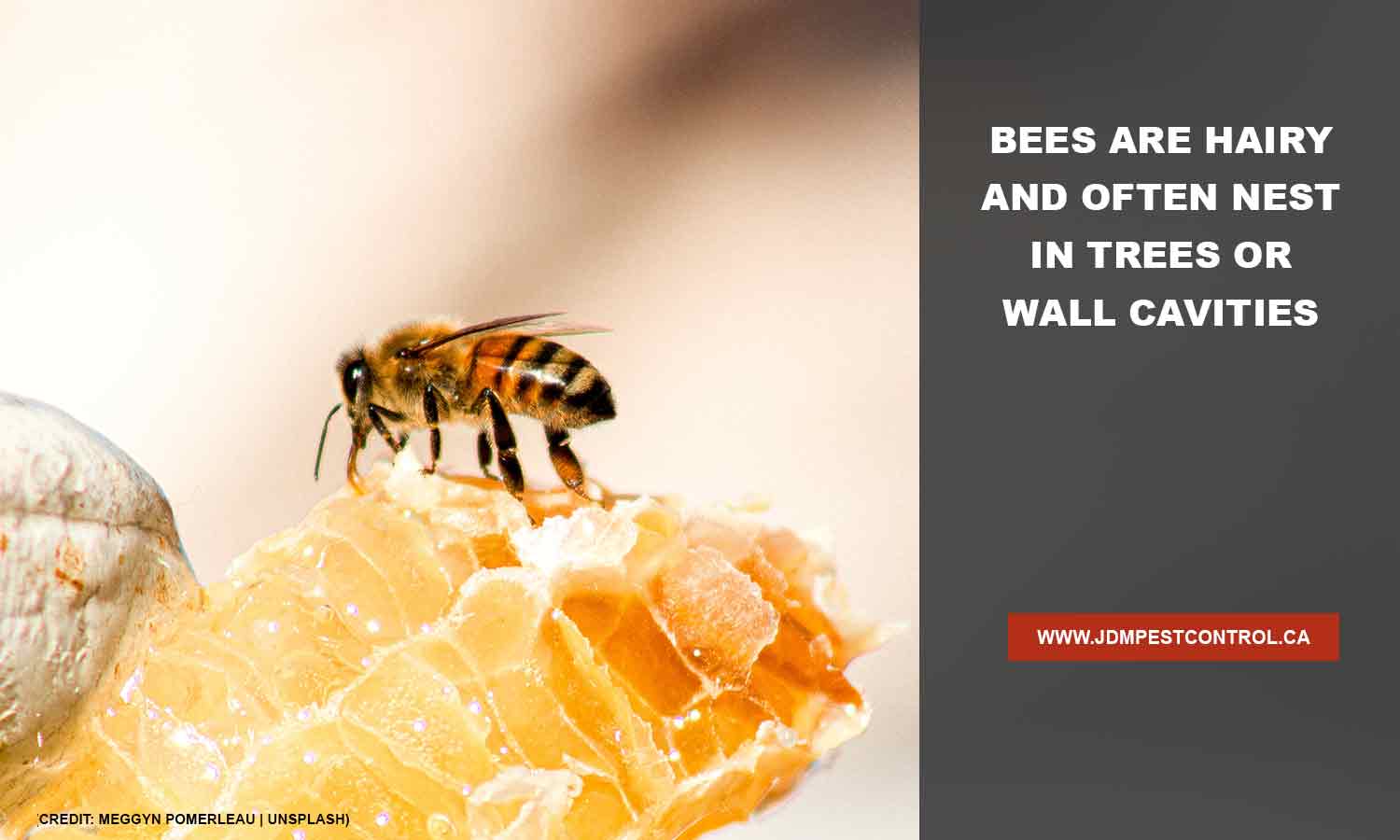
Honey bees
- A type of bee that has a brown or orange-yellow and black band.
- They often nest in a hive, tree cavity, in the wall of a building, and other manmade structures (never in the ground).
- They sting once and die afterwards.
- Honey bees build perennial colonies that survive throughout winter.
- Honey bees collect vast amounts of flower nectar to produce honey.
- They warm up by consuming the honey they stored.
- Honey bees use the wax secretions from their abdomen to create their nest.
Bumblebees
- They are the largest type of bees and they commonly build their nests in the ground or compost heaps.
- Bumblebees are not aggressive, but they can sting.
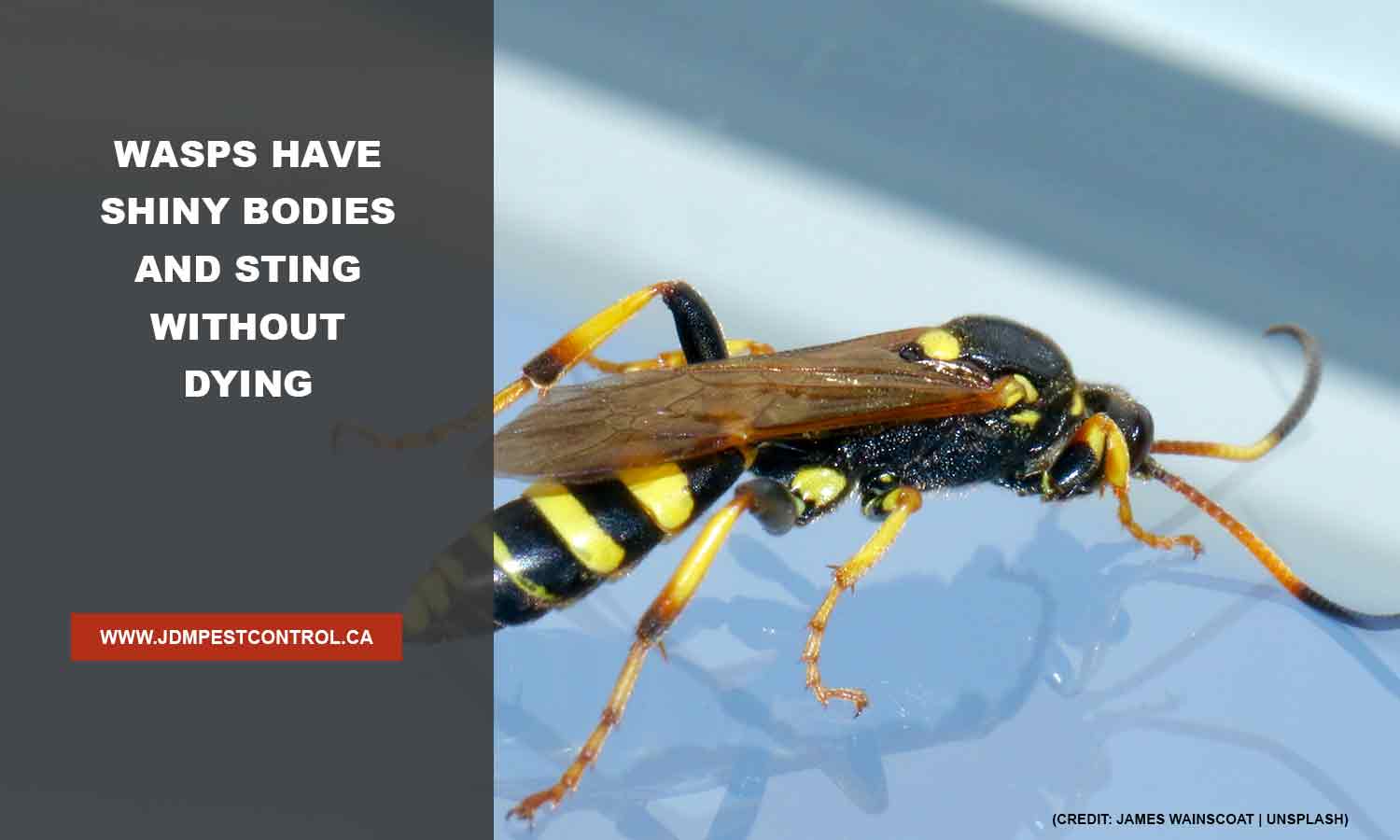
Yellowjacket Wasps
- They are shiny and have yellow and black bands.
- Their nests look like grey paper cartons.
- Yellowjacket wasps typically build their nests underground and can be seen flying in and out (particularly when you mow near the opening of their nest).
- They neither produce nor store honey.
- Unlike honey bees, yellow jacket wasps sting numerous times and still live.
- These wasps cause extremely painful stings. Stay away from their nest or hive.
- They live in annual colonies, which means an entire colony of yellow jackets will perish after winter.
- Only new queens outlive the frosts by hibernating in the ground. They will create new nests during springtime.
What to Do If You Have Bees or Wasps in Your Property
1.Call a pest specialist. Again, do not tackle bee or wasp nest removal on your own. Contact a pest technician who has the equipment and experience in the removal of these insects to protect yourself from getting stung.
2.Locate the nest. Determine the exact area of the nest or hive. After identifying their shelter, stay away from it and remove your pets from the area.
3.Store your food properly. Wasps are attracted to sugar and protein, so it’s best to securely store your foods where pests cannot trace them. Store away your pet food as well. Place them in tightly-sealed containers inside your fridge and clean up spills.
Be Careful of Sting Allergies!
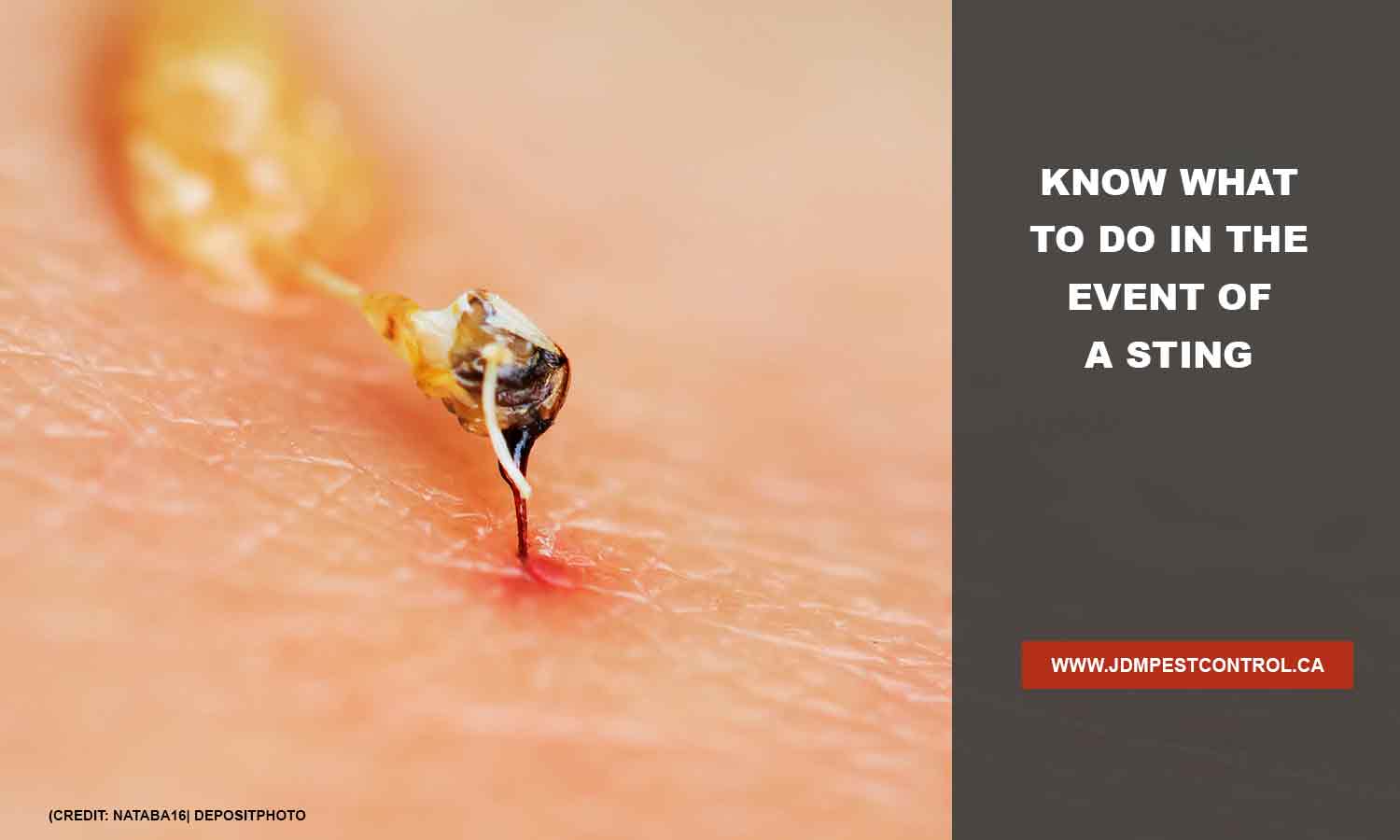
Some people may be sensitive or allergic to bee stings, and one sting can become a medical emergency. In some cases, a person who has serious sting allergies can experience anaphylaxis (a life-threatening allergic reaction).
A sting from a wasp usually causes a sharp pain that lasts for a few seconds. After that, the stung area turns red, swollen, and painful. It can also become irritated or itchy for hours or days. A bee sting produces the same effects. However, it also leaves a sack with venom in the affected area of the skin.
Symptoms of allergic reactions can be anywhere between mild and severe.
Mild reactions can reveal signs including:
- Pain, redness, and swelling around the sting (sometimes, these symptoms can affect the entire arm or leg)
- Swelling that persists for up to 48 hours (a large local reaction may last up to 10 days before it eases up)
- Itchy sensation around the sting area or other parts of the body
Severe allergic reactions can cause symptoms like:
- Red, itchy bumps in different shapes and sizes (also known as hives)
- Swelling of the throat, tongue, and other areas in the body
- Nausea, vomiting, or diarrhea
- Anaphylactic shock which requires emergency medical attention; Anaphylaxis may come with other symptoms like confusion and breathing problems
Here are some tips to prevent the risk of being stung by bees or wasps:
- Don’t go near the area of the hive or nest.
- If you have bee or wasp infestation, make sure to wear closed shoes, long sleeves, and long pants when heading outside.
- Avoid wearing cologne or scented lotions.
- If you get stung, stay as calm and quiet as possible. Slowly step away from the bee or wasp and leave the area.
- Remove the stinger from your skin by scraping or flicking it off. Avoid gripping or squeezing the stinger in an attempt to pull it out, as it may only add more venom into the wound.
- In case you were stung in your arm or leg, make sure to lower it to prevent the venom from spreading faster.
According to HealthLinkBC, here are some steps you can take if you get stung:
If you experience severe reactions including hives, confusion, or difficulty breathing:
- Get an epinephrine shot in your thigh muscle.
- Take an oral antihistamine.
- Go to the emergency room (even after the effects have subsided).
For mild reactions:
- Use an ice pack to lessen the swelling. Elevate the body part where you got stung.
- Take an over-the-counter pain reliever, like Tylenol or Advil.
- Relieve the itching by taking an antihistamine (if a child has been stung, do not give them antihistamine unless advised by the doctor).
If you have discovered a bee or wasp nest near your home, it’s not the time to rely on DIY methods — even when there are various tutorials teaching you how to remove bee or wasp nest from trees.
Instead, call the professionals at JDM Pest Control. We offer immediate bee and wasp removal in Aurora near you, Newmarket, Richmond Hill, and Vaughan, Ontario. We eliminate pests without the use of dangerous chemicals or pesticides.
Call us today at (416) 729-3568 for a FREE assessment!
